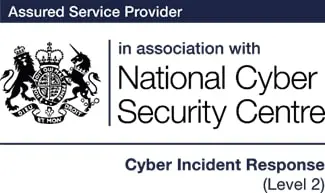Review your company-wide security posture and risk across people, processes and technologies.
DigitalXRAID’s Cybersecurity Maturity Assessment solution evaluates your organisation's operational resilience and cybersecurity procedures to get a 360-degree view of your people, processes and technology against cyber incidents.
The offering includes a comprehensive risk assessment of your organisation’s readiness to prevent, detect, contain, and respond to cyber threats. We also measure your current cybersecurity status and suggest steps to lower your risk.
What is a cybersecurity maturity assessment?
DigitalXRAID’s Cybersecurity Maturity Assessment evaluates your organisation’s operational resilience and cyber security procedures aligned to the National Institute of Standards and Technology (NIST) Framework.
This provides you with a comprehensive risk assessment of your organisation’s readiness to prevent, detect, contain and respond to cyber threats.
The assessment helps organisations of all sizes to identify vulnerabilities and prioritise remediation efforts. With this information, you can focus on managing risk and building trust, ultimately turning risk into a business growth advantage.

Discuss your cyber security options
Get in touch today to speak to an expert and secure your business, or call us on 0800 090 3734
14%
Increase in the average cost of a data breach to $4m from last year
29%
Rise in the cost of cybercrime to an average of $13m
11%
Increase in the frequency of cyberattacks over the last year
Key Components of the Cybersecurity Maturity Assessment Solution
Here’s what can you expect from your Cybersecurity Maturity Assessment solution

Discuss your cyber security options
Get in touch today to speak to an expert and secure your business, or call us on 0800 090 3734
The Benefits Of A Cybersecurity Maturity Assessment
- Baseline your existing cyber security maturity, highlighting areas of weakness to be addressed
- Define a cyber security governance model for your organisation
- Produce a clear and prioritised cyber maturity plan
- Improve use of security budgets
- Reduce residual risk to an acceptable level for your business
- Reduce the impact of security breaches
- Provide a method of measuring and reporting improvements to the board in line with the roadmap
- Increase employee engagement with company-wide cyber security initiatives
- Ensure compliance with a range of standards such as ISO 27001 Certification
- Better understand the cyber security risks present in your supply chains
- Achieve cyber maturity and reduce cyber risk with a clear ROI on cyber security budget

Expertise
DigitalXRAID have a unique insight into the 3 pillars of cybersecurity: Offensive, Defensive and Compliance. We offer the best protection against cyberthreats.
Partnership
Our experts will work as an extension of your team, offering expertise so your business is truly protected against threats as well as compliant with industry standards.
Guidance
DigitalXRAID are completely impartial, we will offer you in-depth advice based on your needs rather than looking to push a particular software solution.
Discuss your cyber security options
Get in touch today to speak to an expert and secure your business, or call us on 0800 090 3734
How Mature Is Your Cybersecurity Program?
How mature do you believe your cybersecurity capabilities are against today’s best practices? Here are the stages of maturity.
Ready For the Cybersecurity Maturity Journey?
You're safe with us.
DigitalXRAID understands that no two companies are the same. That’s why we work as your team to find vulnerabilities and prevent cyberattacks.
First, we’ll establish how you meet cyber threats and what incident response capabilities you have in place.
Then, we’ll help you to prioritise your cybersecurity roadmap and related investments according to your greatest areas of risk and the potential impact.
Cybersecurity services to keep your business protected
We work in partnership with you, offering consultation on a range of services and solutions.
Our focus is on providing long term, comprehensive protection.
Discuss your cyber security options
Get in touch today to speak to an expert and secure your business, or call us on 0800 090 3734
Protect Your Business & Your Reputation.
With a continued focus on security, you can rest assured that breaches and exploits won't be holding you back.











